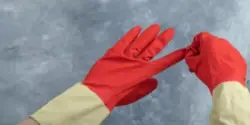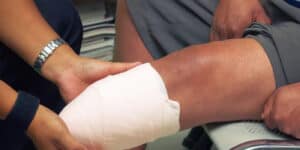
A Degloving injury also called avulsion, is a severe injury characterized by the top layers of skin and tissue are torn away from underlying muscle, bones or connective tissues. In a simple sense a degloving injury is like stripping a body part of skin similar to removing a glove from one’s hand. Degloving is a severe often life- threatening injury that can affect virtually any body part. It is an especially common injury to the legs, hands, and often to the arm or pelvic region. However, any body part or area can be subject to injury.
There are two types of Degloving injuries: Open Degloving and Closed Degloving. Regardless of which type it is, these injuries are very serious and can take a tremendous toll on someone. They can be life-altering injuries that require extensive treatment and therapy to recover from.
OPEN DEGLOVING
This term is applied to a condition when skin and tissue is ripped away or still partially attached as a flap near the wound. Such injuries are often caused by:
- Car vehicle accidents
- Truck accidents
- Motorcycle accidents
- Bicycle accidents
- Industrial or farm accidents
- Animal bites
- Falls from heights
- Sports injuries
These injuries are normally very traumatic in nature and will not resolve themselves on their own. They normally take a great deal of medical care to resolve and from very specialized medical professionals. These injuries, when they are inflicted by the negligence of another person or company, also often have a psychological element to them that can be difficult to recover from and that need to be addressed, in many cases, by a professional therapist, counselor, or psychologist who can help you recover mentally and emotionally. Together, the combined efforts of doctors and mental health experts can help try to get you back to where you were prior to your injury.
For a free legal consultation with a Personal Injury Lawyer
CLOSED DEGLOVING
This term is applied to injuries that are sometime not visible. Often a bruise is the only visible symptom. Closed Degloving involves the separation of the top layers of skin and tissue from deeper tissues. This creates a space called Morel-Lavallee lesions. These lesions can fill with blood, lymph fluid, etc. Closed Degloving injuries often have the same causes as listed above with Open Degloving. The most common location for a Closed Degloving injury is at the top of the hip bone. However, it can also occur in the torso, lower spine, buttocks and elsewhere.
We Are committed to winning and winning big for our clients





